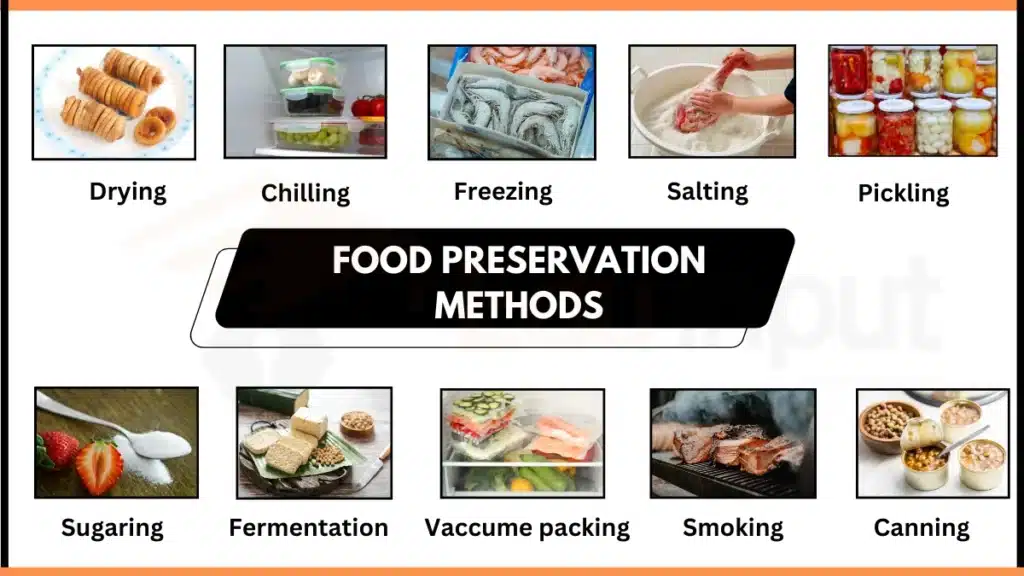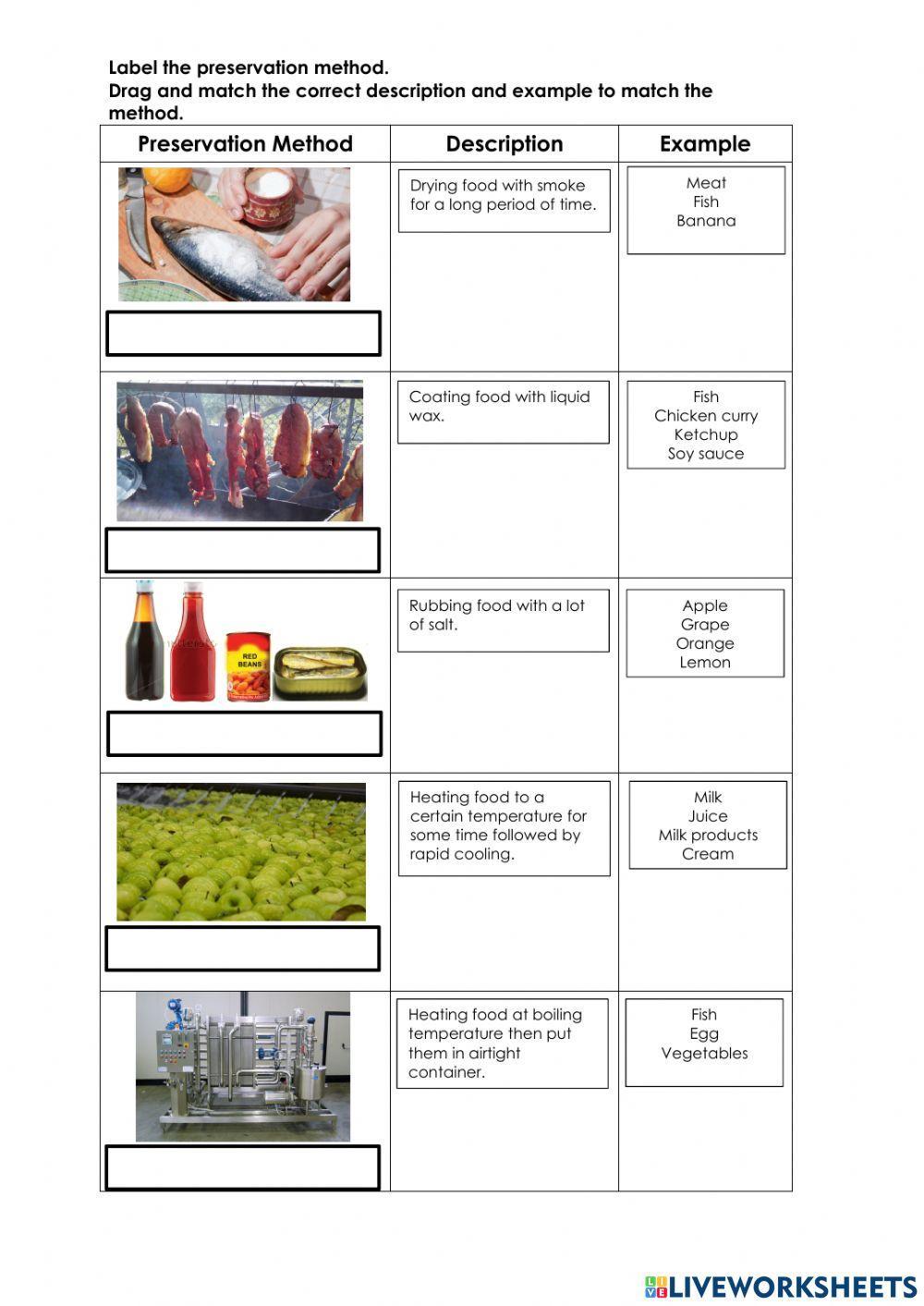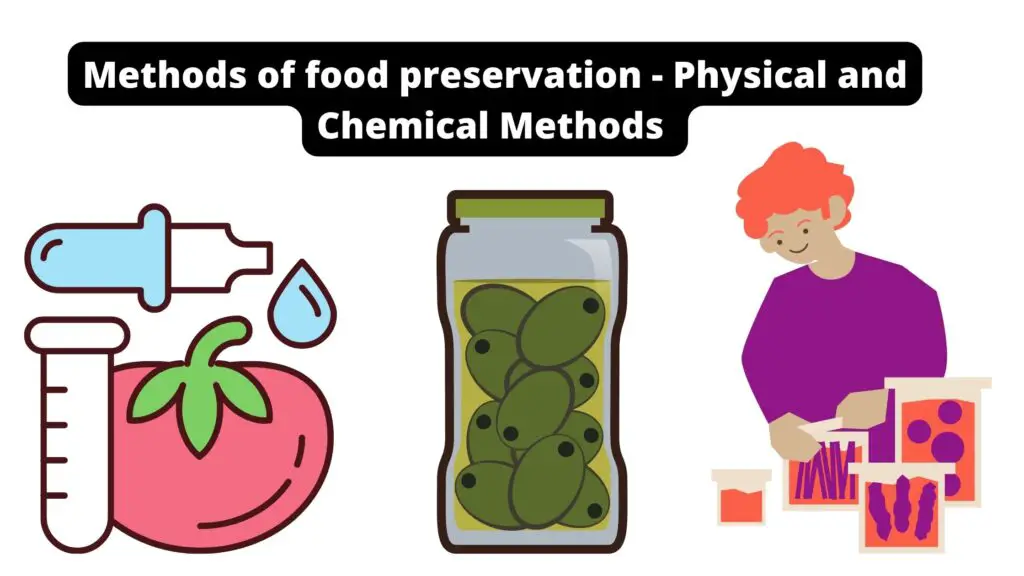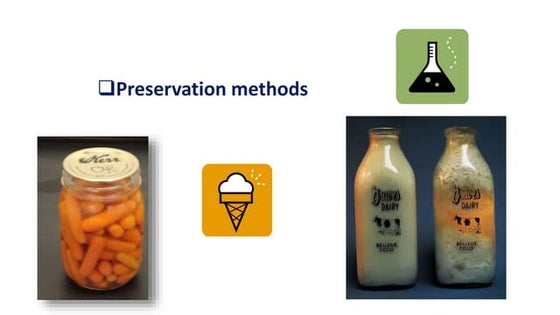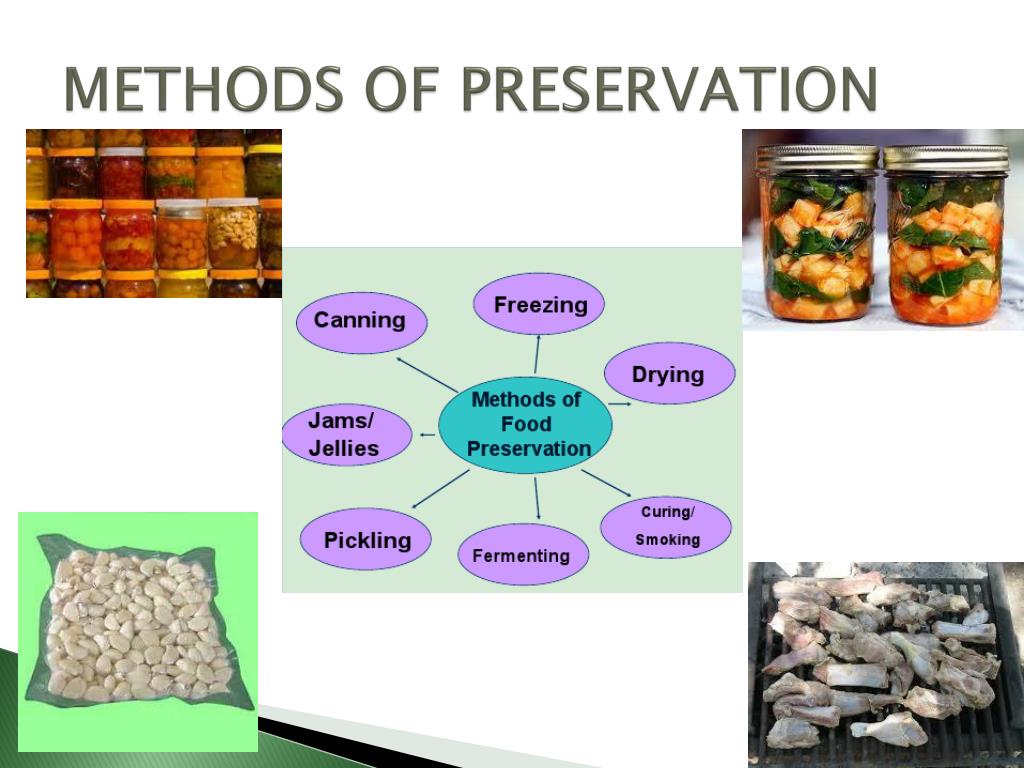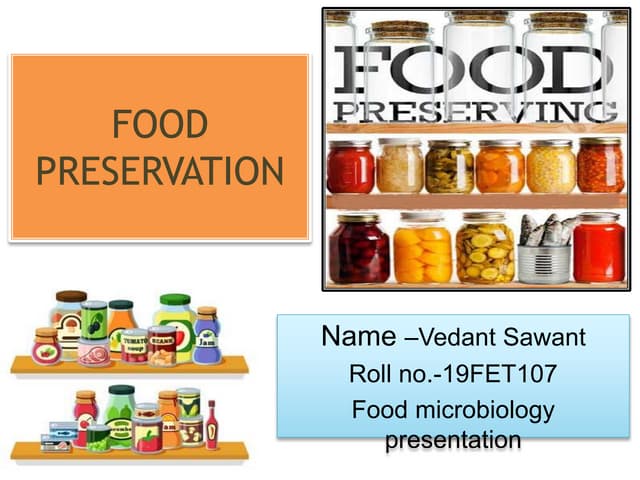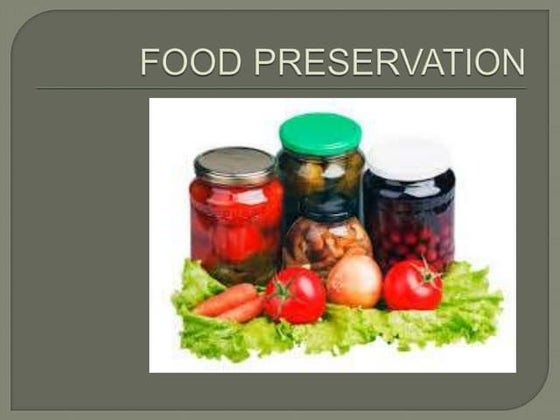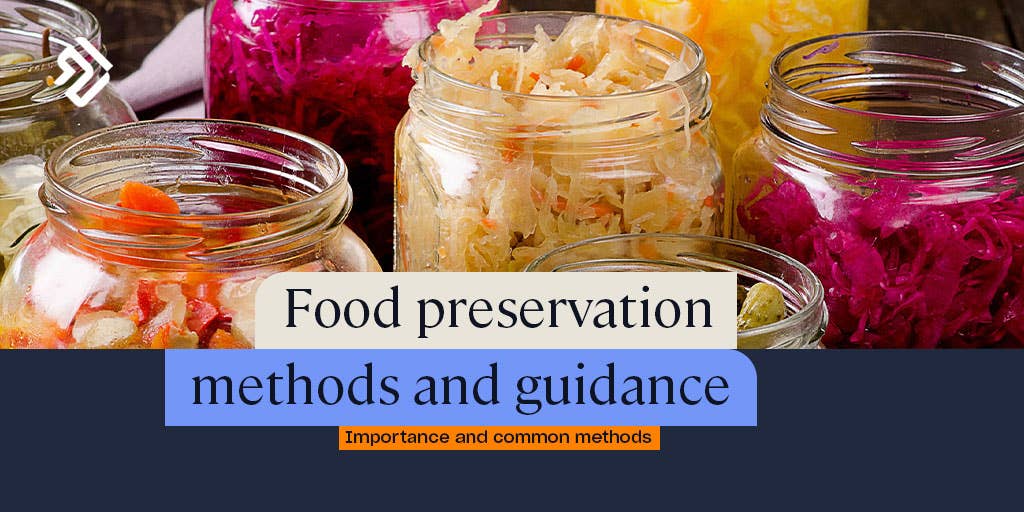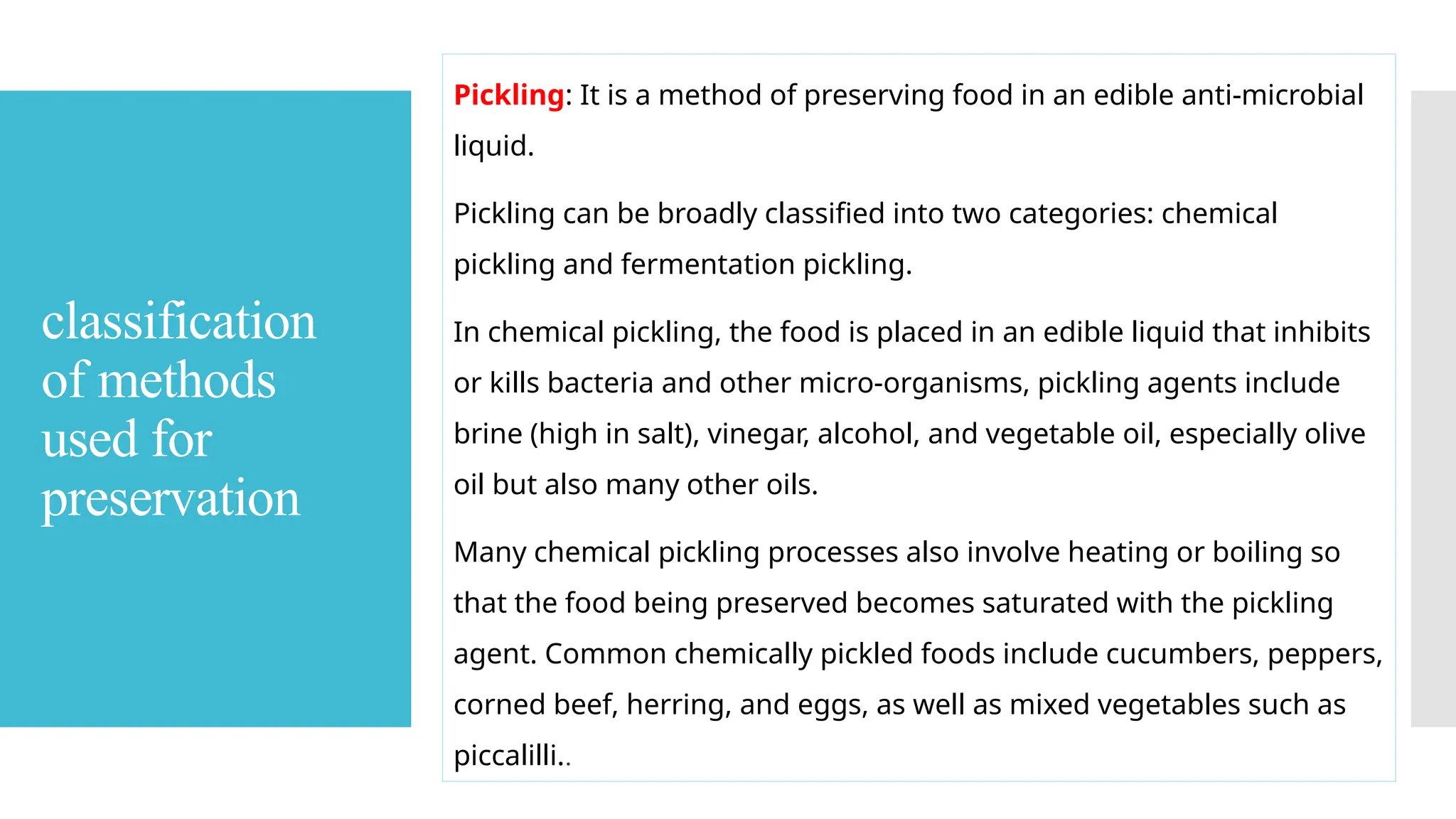All Of The Following Are Methods Of Food Preservation Except

The age-old quest to extend the shelf life of food has given rise to a diverse array of preservation techniques, each with its own scientific basis and historical significance. But amidst this pantry of practices, one stands out as distinctly *not* a method of food preservation.
At the heart of understanding what *isn't* food preservation lies grasping the fundamental principle *behind* what *is*. Preservation aims to inhibit the growth of spoilage microorganisms, slow down enzymatic reactions, and prevent oxidation – all factors that contribute to food decay.
Understanding Food Preservation: Key Principles
Several techniques are recognized and widely used in food preservation. These methods effectively work on inhibiting spoilage and deterioration.
Common Preservation Techniques
Canning, a process developed in the early 19th century, involves sealing food in airtight containers and heating it to kill harmful bacteria and enzymes. Freezing drastically slows down microbial growth and enzymatic activity by lowering the temperature.
Drying removes moisture, inhibiting microbial growth and enzymatic reactions. Salting and Sugaring create environments with low water activity, making it difficult for microorganisms to thrive.
Pickling uses acidic solutions, such as vinegar, to inhibit microbial growth. Fermentation relies on beneficial microorganisms to produce acids or alcohols that inhibit the growth of spoilage organisms.
Irradiation exposes food to ionizing radiation, killing insects, bacteria, and molds. Modified Atmosphere Packaging (MAP) alters the gas composition within a package to slow down spoilage.
Pasteurization heats liquids to specific temperatures to kill most microorganisms, while Vacuum Packing removes air from packaging to inhibit oxidation and microbial growth.
The Exception: Leaving Food at Room Temperature
Amongst all these methods, leaving food at room temperature without any form of treatment or protection does not preserve food. It actively encourages spoilage.
Leaving perishable food unrefrigerated allows microorganisms to multiply rapidly. This leads to rapid degradation, and potentially, the production of harmful toxins.
Bacteria like Salmonella, E. coli, and Staphylococcus aureus thrive in the “danger zone” – temperatures between 40°F (4°C) and 140°F (60°C). This makes room temperature a breeding ground for foodborne illnesses.
"Food should not be left at room temperature for more than two hours," according to the U.S. Department of Agriculture (USDA). "Bacteria grow most rapidly in the range of temperatures between 40 °F and 140 °F, doubling in number in as little as 20 minutes."
The rate of microbial growth at room temperature depends on factors such as the type of food, its initial microbial load, and the ambient temperature and humidity. However, regardless of the specific conditions, spoilage is inevitable.
Impact and Practical Implications
Understanding the distinction between true preservation methods and simply leaving food exposed is crucial for food safety. It is also crucial for reducing food waste.
Improper handling and storage of food contributes significantly to food waste in households and restaurants. Learning about preservation methods helps to minimize spoilage and extend the life of food, benefiting both consumers and the environment.
Consumers can apply this knowledge to make informed decisions about food storage. This helps consumers implement appropriate preservation techniques and improve food handling practices.
Conclusion: Choose Preservation Wisely
While options like canning, freezing, and drying extend the life of food, leaving food at room temperature is not a form of preservation. It is an open invitation for spoilage and potential health risks.
By understanding the principles of food preservation and avoiding practices that promote spoilage, individuals can enhance food safety, reduce food waste, and ensure that meals remain both delicious and safe to consume.
The distinction is vital: preservation requires active intervention, while leaving food exposed requires none, leading to only one outcome: spoilage.
